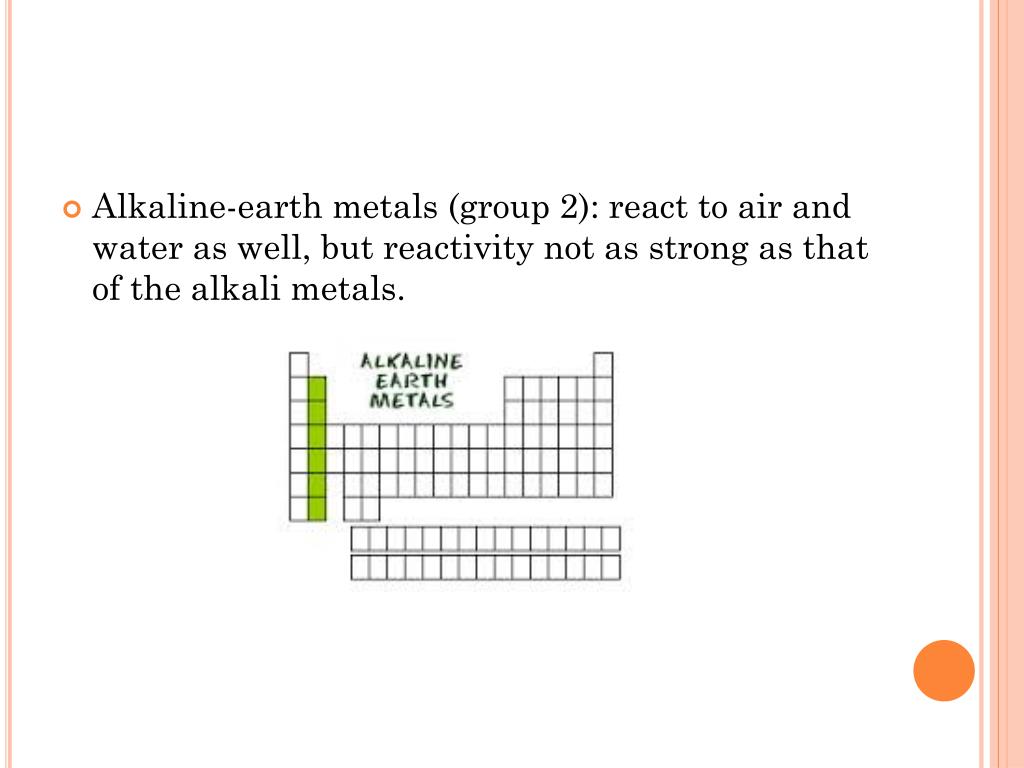
In general, group 2 metals react with water to give a metal hydroxide and hydrogen gas:

Mg very slowly with cold water, but fast with steam the reaction is rapid: Mg + H 2O → MgO + H 2 Reactivity of with water (and solubility of metal hydroxides) increases down the groupĮxplanation:First ionisation energy decreases as the group is descended making it easier for successive elements to lose electrons and form metal ions and therefore react with water. *electron shielding: the nuclear attractive force on the outer valence electrons is ‘shielded’ by the fully occupied inner electron shells. Therefore, the element has weaker attraction between its positive ions and the delocalised electrons and thus weaker metallic bonding.Įxplanation for Mg: it has been suggested that the lower than expected melting point of Mg is a consequence of its different crystalline structure (arrangement of metal ions). With the exception of Mg, there is a progressive decrease in melting point as the group is descended. There is no obvious pattern in the group’s boiling points.Įxplanation: as the group is descended, the metal positive ions increase in size (by having more electron shells), hence delocalised electrons are further away from the positive ions. Hence, the valence electron is easier to remove despite the increasing nuclear charge. The elements in Group 2 are called the alkaline earth metals.Ītomic radius increases down the group Mg–BaĮxplanation: the number of shells of electrons increases in each element as the group is descended.įirst ionisation energy decreases down the group Mg–BaĮxplanation: the distance between the nucleus and the outermost valence electrons is increased (due to an increase in the number of shells and the increased effect of *electron shielding) as the group is descended. Classification, variation, food webs and pyramids.Combustion reactions and impact on climate.Atoms elements compounds and mixtures (interactive).B1.6 Waste materials from plants and animals.RSC Learn Chemistry Classic Chemistry Experiments.RSC Classic Chemistry Experiments (1995).Practical Chemistry (Nuffield Foundation/RSC).3.15 Nuclear magnetic resonance spectroscopy.3.14 Organic synthesis and analysis (A2).2.6 Reactions of ions in aqueous solution.2.4 Properties of Period 3 elements and their oxides.1.11 Electrode potentials and electrochemical cells (Redox A2).1.10 Equilibrium constant Kc for homogeneous systems (Equilibrium A2).3.6 Organic analysis (AS): analytical techniques.

1.7 Oxidation reduction equations (Redox AS).1.6 Chemical equilibria and Le Chatelier’s principle.C3.5 Production of ammonia (an example of a reversible reaction).C3.4 Further analysis and quantitative chemistry.C3.3 Calculating and explaining energy change.C2.5 Exothermic and endothermic reactions.C2.3 Atomic structure, analysis and quantitative chemistry.



 0 kommentar(er)
0 kommentar(er)
